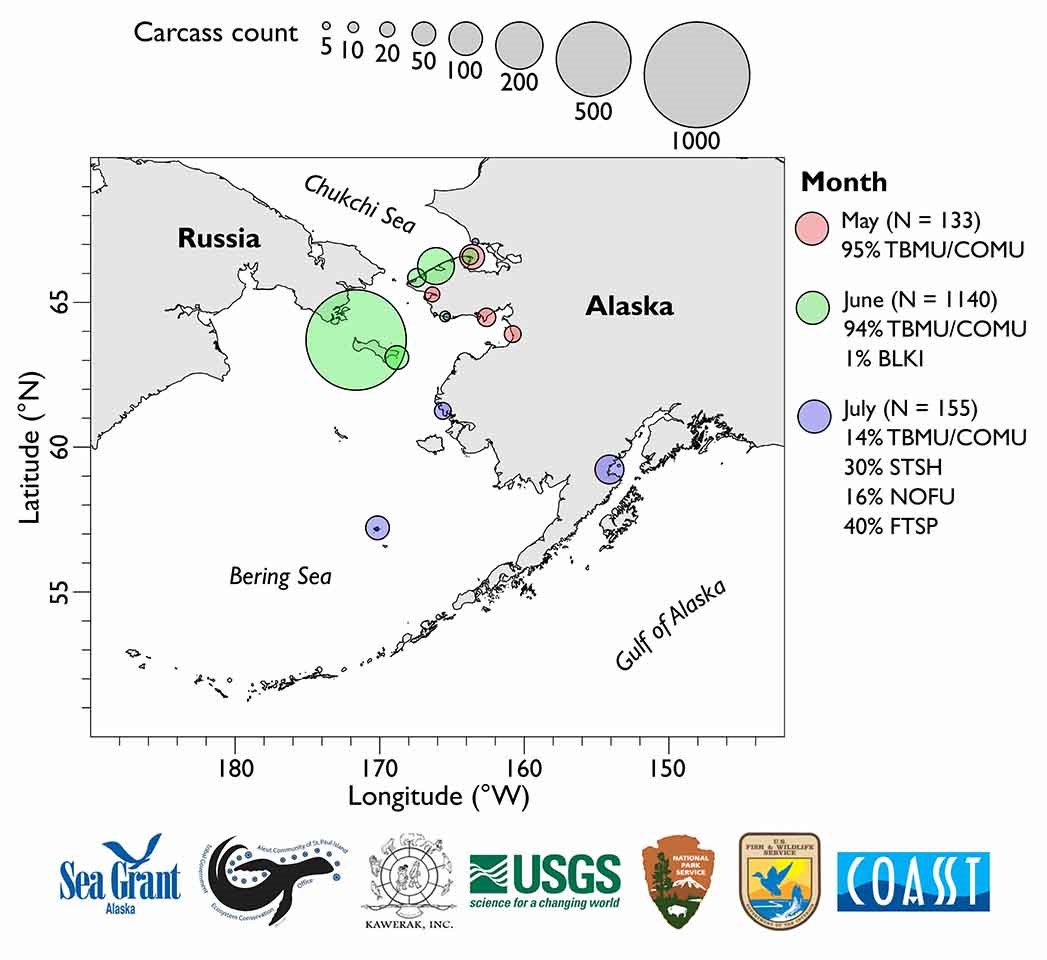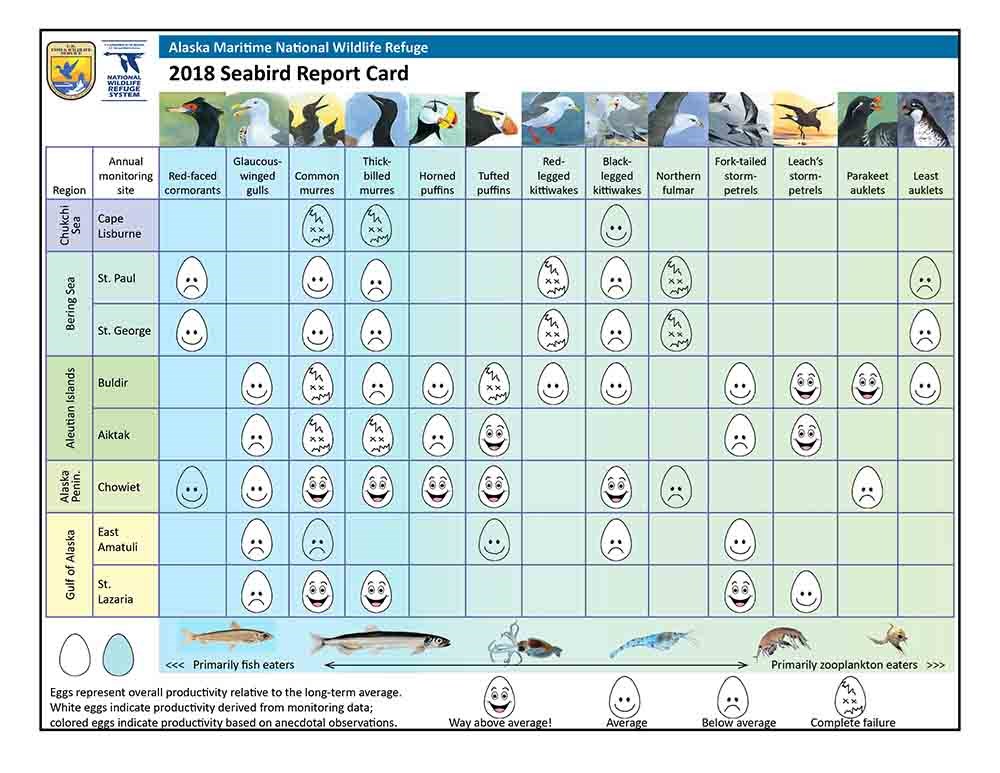Beginning in May 2018, the U.S. Fish and Wildlife Service (USFWS) and the National Park Service (NPS) began receiving reports of dead and dying seabirds from the northern Bering and southern Chukchi seas, including in the vicinity of the Western Arctic National Parklands.
In late June, NPS investigators found 100 carcasses over a total of 4 km of beach surveyed, most of these being murres along the coast of Bering Land Bridge National Preserve, although other species were found there and in Cape Krusenstern National Monument.
Coastal communities have counted hundreds of dead seabirds that include: murres, fulmars, shearwaters, kittiwakes, auklets, and puffins. Additionally, fork-tailed storm petrels have been observed in large numbers along the coasts of Katmai and Kenai Fjords national parks (including Resurrection Bay), and in Prince William Sound. It is unusual to see this species so close to shore. While carcasses were not observed in these locations, there have been carcasses recorded in Kamishak Bay in lower Cook Inlet and McNeil River Sanctuary.

The USFWS and NPS are coordinating efforts with local communities. To date, all bird carcasses sent to the U.S. Geological Survey National Wildlife Health Center for examination were determined to have died of starvation. There has been no evidence of disease, and tests are pending to determine if birds were exposed to harmful algal toxins.
Since spring, seabird die-offs have been recorded in the Pribilof Islands and the northern Gulf of Alaska. Although die-offs have occurred before, this is unusual due to the number of birds affected, the broad geographic area, and the duration of the event, which is ongoing.

Provided by the U.S. Fish and Wildlife Service, Alaska Maritime National Wildlife Refuge
Last updated: February 3, 2021
